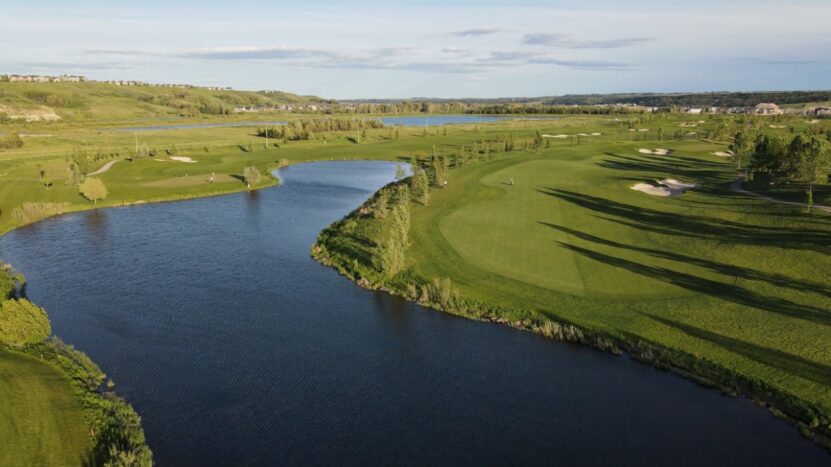Golf is a sport that has been played for centuries and has grown to become one of the most popular sports worldwide. The sport has its roots in Scotland and has since spread across the globe, with millions of people playing it each day. Golf courses are an essential part of the sport, and they come in various shapes and sizes, catering to different levels of play. In this article, we will take a deep dive into the number of golf courses in the world and the factors that influence their growth and decline.
Brief history
They have been around for hundreds of years, with the first recorded golf course dating back to the 15th century in Scotland. Back then, the courses were crude, and the holes were natural depressions in the ground. Over time, golf courses have evolved into the lush, green courses we see today, complete with fairways, greens, bunkers, and hazards. The modern golf course was developed in the 19th century, and by the early 20th century, golf had become a popular sport worldwide.
Current state

The golf industry is a massive business, generating billions of dollars in revenue each year. The sport has a significant impact on the number of golf courses worldwide, with the growth or decline of the industry influencing the number of courses. According to a report by IBISWorld, the global golf course and country club industry generated $29 billion in revenue in 2021, with an annual growth rate of 2.4%. The industry employs over 400,000 people worldwide, and there are over 38,000 golf courses in the world.
Statistical analysis
As of 2021, there are over 33,000 golf courses worldwide, with North America leading the way with over 16,000 courses. Europe comes in second with over 7,500 courses, followed by Asia with over 5,000 courses. Other regions with a significant number of golf courses include Australia and New Zealand, South America, and Africa.
The top countries with the most golf courses
The United States has the most golf courses in the world, with over 16,000 courses. Japan comes in second with over 2,400 courses, followed by Canada with over 2,300 courses. Other countries with a significant number include the United Kingdom, Australia, South Korea, and China.
The Top Cities with the Most Golf Courses
Florida is the state with the most golf courses in the United States, with over 1,250 courses. Orlando is the city with most of them in the world, with over 170 courses. Other cities with a significant number of them include Las Vegas, Phoenix, and Myrtle Beach.
Analysis of the Growth and Decline
The growth and decline of this industry vary by region. North America, Europe, and Asia have seen significant growth in the number of golf courses in recent years, while other regions such as Africa and South America have seen a decline in the number of courses.
Their growth in North America can be attributed to the rise of tourism, which has attracted players from around the world. In Asia, their growth is due to the rise of the middle class and increased interest in the sport.
Influencing Factors
Several factors influence their number in a region, including population density, economic growth, and government policies. Population density plays a significant role in the number of golf courses in a region, with urban areas having fewer courses than suburban or rural areas.
Economic growth also influences the number of golf courses in a region, as golf is often seen as a luxury sport that requires disposable income. Additionally, government policies, such as taxes and regulations, can have an impact on their number in a region.
Environmental Impact
They have an impact on the environment, including water usage, chemical runoff, and habitat destruction. However, efforts are being made to mitigate the impact of golf courses on the environment. They are implementing water-saving measures such as the use of drought-tolerant grasses and reducing the number of watering cycles.
Chemical use is also being reduced, and many of them are transitioning to organic maintenance practices. Efforts are being made to preserve and restore natural habitats and wildlife on golf course properties.
The Economic Impact
They have a significant impact on the local community, generating revenue for local businesses and creating jobs. In addition to golf-related businesses such as equipment and apparel retailers, they also support local restaurants, hotels, and transportation services. According to a report by the National Golf Foundation, the golf industry supports over two million jobs and generates over $84 billion in economic impact in the United States alone.
The Future of the golf industry

The golf industry is expected to continue to grow in the coming years, with the Asia-Pacific region leading the way. However, there are challenges facing the industry, including a decline in interest from younger generations and the high cost of maintaining golf courses. The pandemic has had a significant impact on the golf industry, with many courses forced to close temporarily and fewer people playing due to social distancing measures.
The impact of COVID-19
The COVID-19 pandemic has had a significant impact on the industry, with courses around the world forced to close temporarily to prevent the spread of the virus. As restrictions have lifted, many courses have seen a surge in demand, with people turning to golf as a safe activity. The pandemic has accelerated the adoption of technology in the industry, with the increased use of online tee-time reservations and contactless payments.
A comparison to other popular sports facilities
While they are a significant part of the sports industry, they are outnumbered by other sports facilities such as soccer fields and basketball courts. According to a report by the World Atlas, there are over 270,000 soccer fields and over 450,000 basketball courts worldwide, compared to the 38,000 golf courses.
A breakdown of the different types
They come in various types, catering to different levels of play and styles of golf. The most common types include public, private, resort, and municipal courses.
- Public courses are open to the general public and typically have lower green fees.
- Private courses require membership and have higher green fees. Resort courses are often part of a larger resort and cater to vacationers.
- Municipal courses are owned and operated by the local government and are typically more affordable.
FAQs

What efforts are being made to mitigate the environmental impact of golf courses?
Efforts are being made to mitigate their environmental impact, including implementing water-saving measures, reducing chemical use, and preserving and restoring natural habitats and wildlife.
What is a resort golf course?
It is often part of a larger resort and caters to vacationers.
What is a municipal golf course?
It is owned and operated by the local government and is typically more affordable.
What is the future of the golf industry?
The industry is expected to continue to grow in the coming years, particularly in the Asia-Pacific region. However, the industry also faces challenges, including a decline in interest from younger generations and the high cost of maintaining them.
Conclusion
In conclusion, they are an essential part of this industry, with over 38,000 courses worldwide. North America leads the way in the number of golf courses, with the United States having over 15,000 courses. The industry has a significant impact on the local economy, generating billions of dollars in revenue each year and supporting millions of jobs.
However, the industry faces challenges, including a decline in interest from younger generations and the high cost of maintaining golf courses. Efforts are being made to mitigate the environmental impact of golf courses, and the industry is expected to continue to grow in the coming years, particularly in the Asia-Pacific region.

